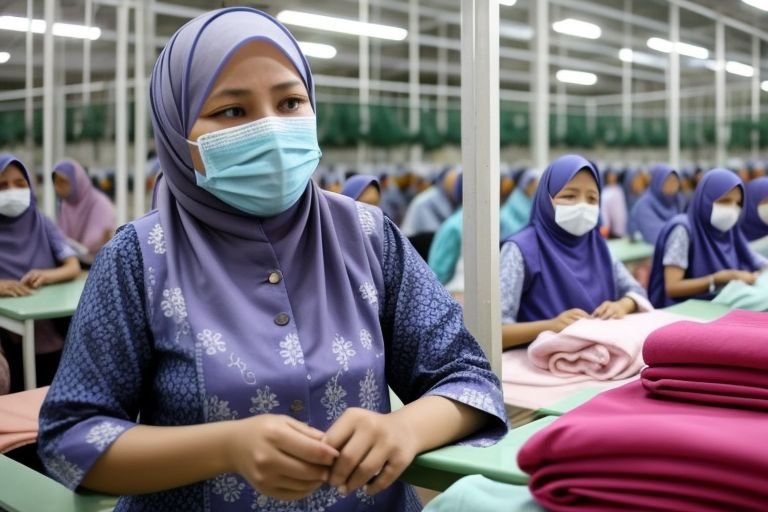
Indonesian Textile Industry Faces Challenges As Layoffs Surge
Indonesia’s once vibrant textile industry which has been a mainstay of the nation’s manufacturing base for many years, has lately been struggling as latest statistics show high levels of redundancy. The Department of Manpower states that the total number of workers laid off during the course of January to August 2024 as 46,240, showing an increase of 23.71 percent compared to the same period last year. This trend is most apparent in the textile industry, in which employment is often among the most insecure.
This is worrying for both industrialists and policy makers as it points to difficulties facing Indonesia manufacturing sector. Several problems that have plagued the textile industry, which used to be the largest employer and a key foreign exchange earner have caused this increase in sack of workers.
Another cause of the problems in the industry is the stiff market competition from other textile manufacturing countries in the region. Vietnamese and Bangladeshi competitors have become increasingly competitive, offering lower labour costs, and accessing priority access in strategic markets. This has meant that Indonesian textile manufacturers had been forced to cut cost and this at the expense of their employees in some instances.
Also, factors such as decline in the general economic growth and changes of consumers’ habits of all communities affected the demand of textile products. COVID-19 has shifted the retail dynamics ahead, making e-commerce a more crucial part in fashion consumption and fast fashion brands coming under further pressure. These changes have put huge pressures on many Indonesian textile firms to reconsider there strategies and capacities for production lowering many of them in size.
The Indonesian government has realized the problem of the textile sector and has taken proper actions to establish the sector. They include the provision of infrastructure, the lowering of logistics charges as well as offering of tax relief measures to producers. However, the recent upsurge in layoffs conditions to FACE signifies that the above measures are inadequate to deal with the structural break in the industry.
Employer organizations and worker unions have demanded better protection for the textile workers and more interventional actions from the government to save jobs in this sector. They have claimed that the industry is very relevant to the Indonesian economy thus deserves special consideration by the government.
What has happened in the textile industry is not exceptional in the Indonesian manufacturing industry, which has been in a process of attempting to jump to a higher value chain and compete on quality rather than price. Nevertheless, this change has been difficult especially for Labour-intensive sectors such as the textile and garment industries.
For decades, Indonesian textile manufacturers had already proven that they have the capacity to compete in the world market However, as Indonesia improves its economic scene with the aim of bringing in more foreign investments as well as moving away from an over-dependency on the textile industry, traditional industries may once again meet its woe. The government is in a precarious position of supporting these sectors with the aim of developing newer areas of higher value added industries.
They add that the coming months will be important as the industry tries to deal with these challenges. Many industry players are currently demanding the adoption of an integrated plan with approaches that fix the present problems as well as enhance competitiveness in the long run. It may entail acquisitions related to speed and tool enhancements of employees, the positioning strategy of Indonesian textile products in the global market.
The increase in the layoffs also points towards the more urgent need for adequate social protection as well as adequate retraining opportunities for the workers. Therefore, as the Indonesian economy progresses to one that turns out more versatile opportunities the need to-INRA.org ensure that workers can transition to these kinds of opportunities in order to sustain social order and positive growth.
The difficulties that the textile industry has faced are now still a reminder about the process of Indonesia’s economic development. Since the country is at a stage of attempting to become a high income country, there will be need for it to effectively handle the problems associated with transition from traditional blocs while at the same time nurturing new growth poles. The current situation in the textile sector may give some clues as to how Indonesia is going to address these problems in future.


